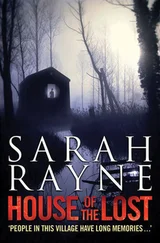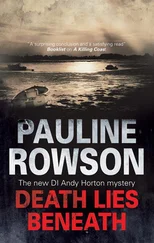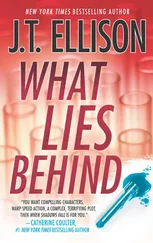Amy thus satisfactorily dealt with, he set off to scour the surrounding villages. He took the sketch he had made of the glass shard found at St Anselm’s, along with the scrap of music notation. The photographs Amy had taken were in the same envelope. Amy. There he was, back again with his feline sui generis girl.
The first three villages he explored yielded no clues, but on his third day he found a church about twelve miles east of Upper Bramley, dedicated to St Luke the Hospitaller. Prowling absorbedly through mildewed parish records provided by a helpful churchwarden, Jan found something that delighted him.
It was a brief account of how, at Christmas 1920, St Luke’s Choir (mixed) had travelled by charabanc to join the choir (male) of St Michael’s, Upper Bramley at the dedication of a newly installed organ at St Anselm’s in Priors Bramley. This appeared to have been quite an event, and the diligent chronicler – Jan thought it might be the choirmaster – recorded that the choirs had joined together for two hymns, Nunc, Sancte, nobis Spiritus and Rerum, Deus tenax vigor , which Mr Cadence had particularly requested be sung.
Jan, who had been bent over the small table in the vestry, sat back, smiling. There were only four hymns universally attributed to St Ambrose, and these were two of them. Good for you, St Luke’s, he thought, making notes of dates and names for further investigation, because he had not expected to find such clear evidence of the plainchant being used into the twentieth century. It was a strong tradition of the Roman Catholic Church, and the churches in this area were almost entirely Anglican. Even if the notation on the St Anselm’s stained glass was the Sanctus, it would most likely be a left-over fragment from the Popish days before Henry VIII swept Catholicism out of his realm.
The first hymn, the Nunc, Sancte, nobis Spiritus , appeared to have taken an extra verse unto itself for the occasion: a stanza from Wordsworth’s famous poem ‘Tintern Abbey’, which Mr Cadence had also asked be included. The diligent chronicler, clearly wishing to record all the details, had written the extra verse out in full:
I have learned
To look on nature, not as in the hour
Of thoughtless youth; but hearing oftentimes
The still, sad music of humanity,
Not harsh nor grating, though of ample power
To chasten and subdue.
The still, sad music of humanity . It was the strange troubling line on the plaque in St Anselm’s and, viewed logically, it was not a particularly unusual or remarkable find. Some long-ago member of the Cadence family had wanted to include a few lines from a favourite poem at a special church service. Where’s the big deal? Jan’s students might have said.
But Jan was suddenly curious about this unknown Cadence gentleman. Nineteen twenty. For a moment, his hands still resting lightly on the faded pages, the scents of old timbers all round him, he felt the past brush against his mind. Nineteen twenty, with half the world still recovering from the Great War.
Who were you? he thought, staring back at the faded, slightly foxed pages. And why did that piece of Wordsworth mean so much to you that you not only had it set to music that had virtually vanished, but you also caused a line from it to be engraved into the fabric of the church?
Jan’s curiosity about this enigmatic Cadence man took strong hold of him over the next couple of days. He reached Upper Bramley and the Red Lion too late that night to do anything about it, but early next morning he headed for the local newspaper offices. If the donation and dedication of St Anselm’s organ had been an event worthy of those records, surely it had been worthy of an article in the Bramley Advertiser .
It was not really part of his research; it was merely an interesting byway that might sprinkle in a few extra details about the area’s tradition of plainchant, and it would not add anything. But it all bound up with the deserted village – the desolate poisoned Priors Bramley – and Jan wanted to know more.
The Advertiser ’s staff were helpful. The paper had been in existence in 1920, they said, in fact it had started in 1908. Oh yes, all issues had been preserved on microfiche – that had been done ten or fifteen years ago when the title was bought by a big newspaper group. If Dr Malik wanted the actual newspapers, they were stored at the local library. Mr Poulter – oh dear, poor Mr Poulter – had been meticulous about record-keeping.
‘I really only need to look at a few copies,’ said Jan. ‘I’ll try the library first.’ He told himself this was because it would be quicker, not because Amy might still be working there.
She was not – she’d left to concentrate on her holiday essays – but one of the girls on the desk thought it would be fine for Dr Malik to have access to the newspaper archives.
‘We’re taking day-to-day decisions as we think best until Mr Poulter is replaced.’
‘I was so sorry about his death,’ said Jan conventionally.
‘So we were. He’d been here all his working life – well, you could say the library and Upper Bramley actually were his life, I suppose. Sad in a way, isn’t it? Still, all the old papers are in the cellars. The police were there a week or so back – looking for clues about those bodies. I don’t think they found anything useful, though.’
‘Do they know who the bodies are yet?’
‘If they have, nobody’s been told. They didn’t take any of our records away and they didn’t say the public couldn’t have access.’
As Jan surveyed the archived copies of the Bramley Advertiser in the dingy cellars, the unshaded electric light casting a hard radiance, the feeling of the past reaching out swept over him again. This is how history preserves itself, he thought as he began to turn the brittle pages. Not because anyone folds it in camphor or lavender, or scatters magic charms in and out of the creases, but because so much of it gets written down. Originally it was recorded in home-made ink on curling brown parchment, then in newsprint. Nowadays it’s hard disks and memory sticks and video tapes. As he scanned the headlines and the articles about local events, he thought this was the real heart of history. This parish-pump news, this miscellany of trivia. This England…
The Bramley Advertiser had originally been a fortnightly publication and had not achieved the dizzying heights of being produced once a week until 1922. Jan started his search at the beginning of 1920. The dedication of the new organ would have been a significant event in the villages. Surely the paper would have reported it?
But it had not. He went through the entire batch of papers from the start of 1918 to the end of 1922 but found nothing. This was vaguely irritating, but he was sufficiently used to dead ends in research not to be too daunted. It was possible his eye had missed a small paragraph. But even if he had, it did not matter.
But the image of that shadowy man who had clearly cared deeply about music and had found some resonance in Wordsworth’s words had lodged in his mind. He wanted to know more. It would have to be the digital age after all.
The microfiche at the Bramley Advertiser was available, and Jan was shown to a small room with a table, chair, and desktop viewer. It took him some time to fathom the database system, but eventually he mastered it, and typed in ‘Cadence’, and also ‘Cadence Manor’ as search requests.
This elicited quite a number of references to the Cadence family in general, and Jan read them diligently. In the main they were reports of how Sir Julius Cadence or his wife had opened some local event, or smudgy photographs of parties at the manor house. But there was nothing linking them to St Anselm’s, and mentions of the family itself trickled to almost nothing by 1930. Perhaps the upcoming generation had simply married and gone away, or perhaps the men of the family had died in the Great War. There must be a war memorial, and he should see if any Cadences were listed on it.
Читать дальше












